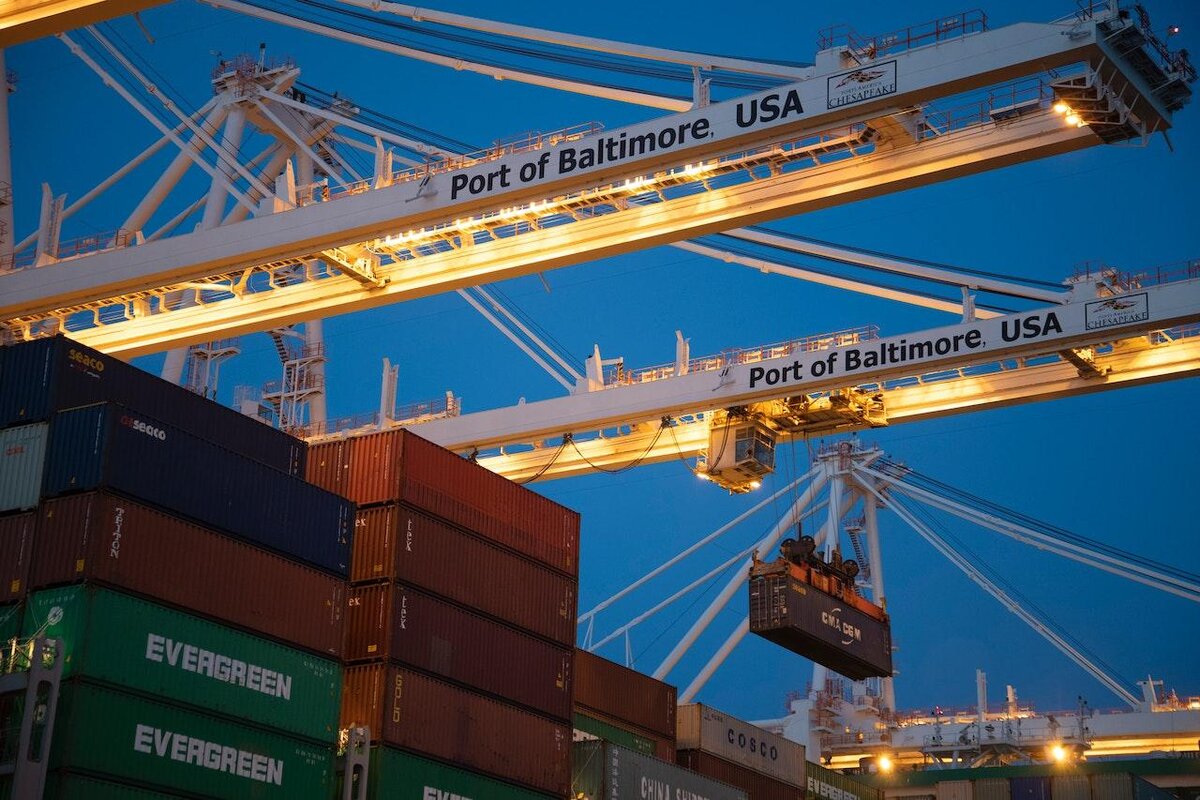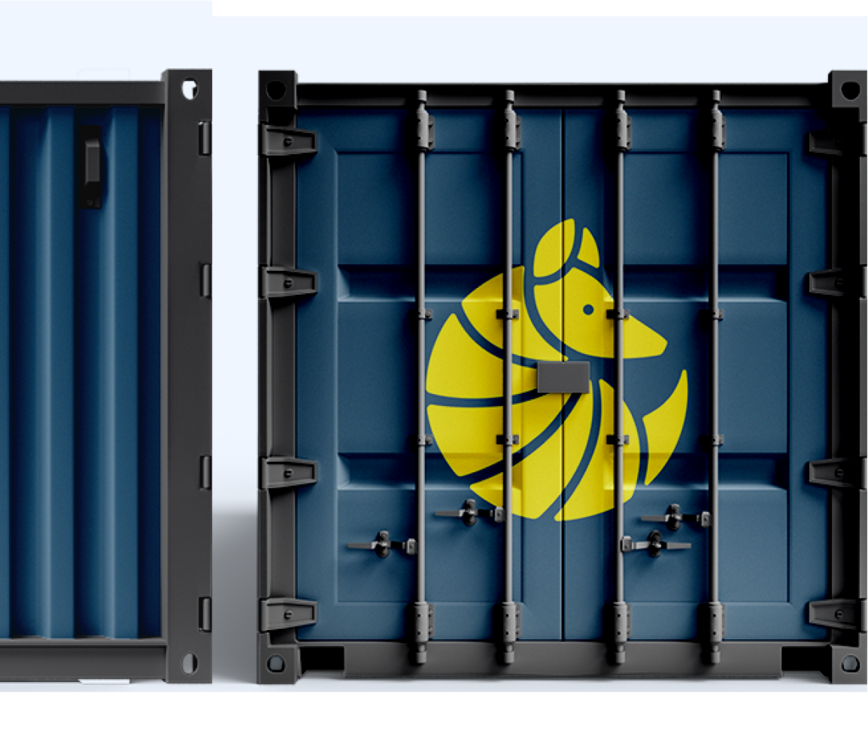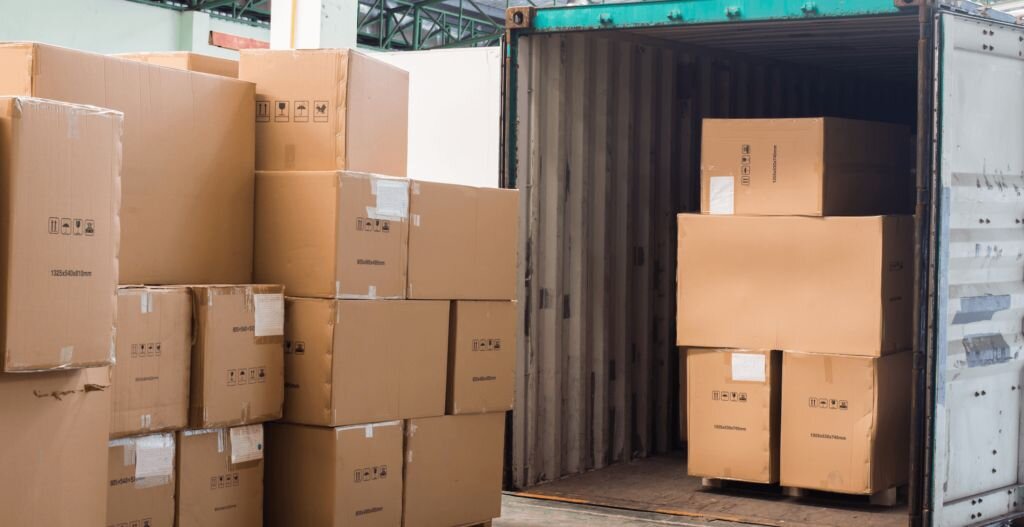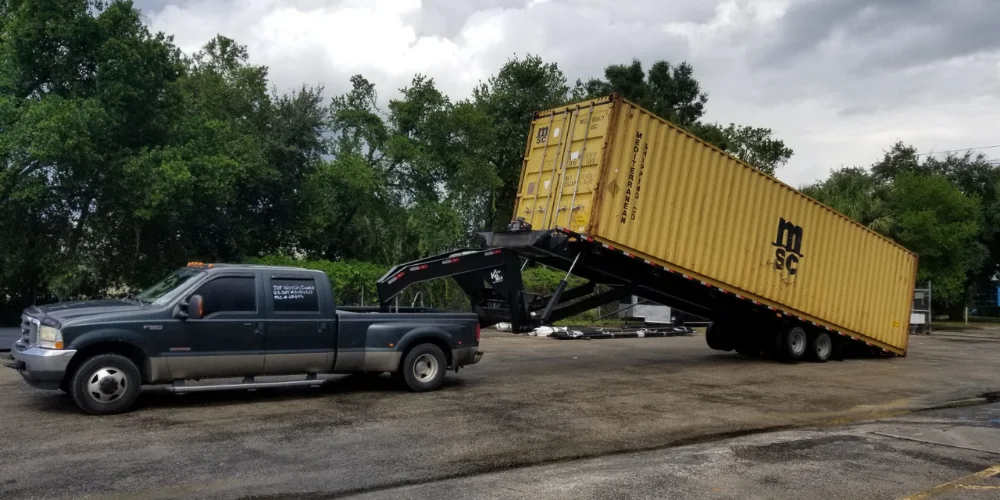Track my order

You have a shipping container on your property, but something comes up and you need to move it. What is the best way to go about this?
To start off, unsurprisingly, shipping containers are heavy. An empty 20 ft shipping container is 5,181 lbs and an empty 40ft shipping container is 8,267 lbs. Then, if you have any cargo inside of the containers, they will naturally be even heavier than these baseline weights. For example, if you’re using a shipping container to transport your belongings to a new house, the container could be well over 50,000 lbs. The fact of the matter is that you will need heavy machinery to get the job of moving your shipping container done. Without this machinery, trying to move a shipping container can be futile at best and dangerous at worst.
If you’re considering moving your shipping container but aren’t sure the best (and safest) way to do so, read ahead to find out how.

How to Transport a Shipping Container Across Short Distances
Forklift
You can use a forklift to pick up a shipping container and move it, as long as it’s only for a short distance. Say that you’ve purchased a used shipping container for storage purposes, and you’ve decided that the delivery truck offloaded the container too far away from your house. You can use a forklift to pick up the container and adjust its location.
It should be noted that you’ll need a specific type of forklift. You will need to pick a forklift with a high weight capacity (for example, 15,000 lbs). You will also want a forklift that has wide arms (“forks”), wider arms will allow the machinery to easily pick up the container and carry it without tipping or shifting. For the sake of safety, only use it as a means to transport a 20ft shipping container. A 40ft shipping container will be too large and heavy.
Finally, if you’re not certified yourself, you will need to hire someone who is certified to drive a forklift.
Crane
Another way that you can move a shipping container across a short distance is with the help of a crane. Shipping containers are designed to be moved by cranes, built with corner castings so that a crane can latch onto each corner and deposit it in the desired location.
A crane is the best option for moving a 40ft shipping container, along with a container that is full of cargo. It’s built to withstand heavier weights than the average forklift.
As with the forklift, if you’re not certified, you will want to hire a certified professional to operate the crane safely.
Pickup Truck
Can you transport a shipping container with a pickup truck? Yes, but your pickup truck will need to have a towing capacity of over 5,000 lbs in order to be useful in this situation. Equipped with either a flatbed or tilt bed trailer, pickup trucks can be used for moving 40ft shipping containers as well as 20ft shipping containers.
A shipping container also doesn’t have axles that will help you secure the container to the back of a vehicle. So, whenever you’re planning on moving a shipping container with the help of a pickup truck, you will need to put it on a trailer bed first. The trailer bed provides a flat surface to hold the container and can easily latch to the back of a pickup truck.
Overall, if you’re not certified to be using heavy machinery or are familiar with using a trailer, you should hire trained professionals with the proper equipment to move your shipping container. These are the safest options and don’t come with the same risks of damaging your personal vehicle, property, or container.
Tractor
Can you use a tractor to move your shipping container? Technically, yes. A tractor can help you with moving your shipping container short distances. It will have to be a tractor that has a high towing capacity, and the container will need to be secured on a trailer bed.
Check your tractor’s towing capacity before moving a shipping container. If it’s too low, don’t attempt it. If your tractor has a strong towing capacity, only use it for moving an empty 20ft shipping container.

How to Transport a Shipping Container Across Long Distances
Trucks
The most common way to move your shipping container is with the help of a truck. A shipping container can be transported by a tilt bed truck, flatbed truck or a truck with a container chassis. You might have to contact a freight agent or a regional trucking company to see whether they can handle moving your container.
Flatbed
A flatbed truck (or pickup truck equipped with a flatbed trailer) has a level bed so that you can secure a shipping container. A forklift or crane is needed to load and offload the container.
Tilt Bed
A tilt bed truck (or pick-up truck equipped with a tilt bed trailer) has a flatbed that you can secure a shipping container to. Upon delivery, the flatbed can tilt at an angle where the container will slowly slide off.
Semi-Truck with Container Chassis
A container chassis is a trailer specifically designed to transport shipping containers. The chassis has built-in twist locks that interact with a container’s corner castings and keep the container secure for long distances. You will need a crane to offload the container from the chassis.
Train
You can move your shipping container by intermodal railroad. However, you will have to arrange for a truck to deliver your container to the railroad first.
Ship
To transport your shipping container internationally, you’ll need to go by sea. But again, you will need to arrange for a truck to deliver your container to the nearest port.
How Much Does It Cost to Move a Shipping Container?
How much does it cost to move a shipping container? It depends on several factors, including how far its intended destination is. The farther your destination, the more you can expect to spend on transportation equipment and services. Other factors like container size, weight, and insurance will also impact what you pay.
According to the site Angi, an online home improvement network, the average cost to ship a container is $3,000 — the lowest cost being $1200, and the highest cost being over $7000.
Moving a shipping container is no easy feat. It requires specialized equipment, consideration, and careful planning. To learn more about what to consider when buying a shipping container, or how to take care of your shipping container for maximum lifespan, check out our blog.

About Nina Barango
Nina Barango is an experienced content marketer and container expert with a proven track record in the tech and logistics industry. Having worked with various startups and SMEs, she bridges the world of marketing, tech and shipping containers. When she's not creating content that'll revolutionize global container trade, you can find Nina reading a book or mastering her video editing skills.







Continue Shopping
Loading cart

